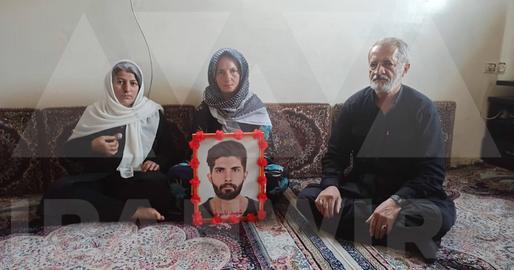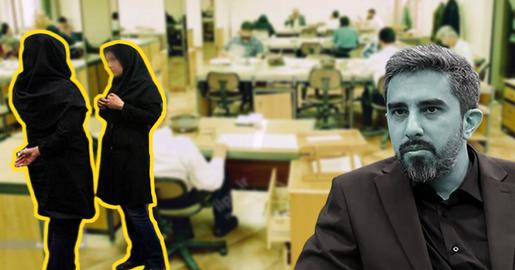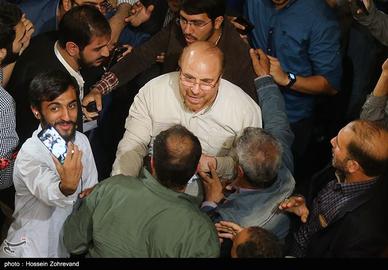On Wednesday, May 3, a huge explosion at Zemestanyurt coal mine in the northeastern Iranian province of Golestan left scores of people dead and injured. Initial reports put the number of deaths between 21 and 35 — but Iran’s Labor Minister Ali Rabiei put the number higher, at between 32 and 35. The number of casualties is expected to rise as rescue operations continue.
The blast happened at 12:45pm, at a time when workers were changing shifts. Several officials blamed the explosion on accumulated gas and said it was hampering rescue efforts. The explosion occurred 1,200 meters underground and according to one report [Persian link], it happened after a locomotive could not be started and the workers tried to hot-wire it. A resulting spark ignited the high concentration of the methane gas in the tunnel.
The tunnel collapsed, trapping between 32 and 35 miners. Labor Minister Ali Rabiei told the press the miners had been confirmed dead. The same report said 21 miners who tried to rescue their co-workers lost their lives as well. A local official told Tasnim News Agency that at least 69 people had been injured. Sadegh Ali Moghadam, the provincial director of disaster management services, warned that the death toll might rise.
According to the UK newspaper the Independent, Hossein Ahmadi, head of the provincial Red Crescent, told state TV that about 26 people were believed to be trapped. But other officials provided significantly higher estimates, including one from Pir Hossein Kolivand, who runs Iran's emergency services. He said as many as 80 miners could be trapped in two sections of the mine.
The Zemestanyurt coal mine in Golestan province, which borders the Caspian Sea, employs more than 500 workers. Iran annually consumes some 2.5 tons of coal, mostly for use by its steel mills, but only extracts about one million tons of that from its own mines per year.
The labor minister, who President Rouhani sent to the scene of the tragedy, announced that he would be setting up a committee to investigate the explosion. It is well known that Iranian coal mines have a poor safety record and that not much capital is spent in maintaining them. In 2013, 11 workers were killed in two separate mining incidents, and, prior to that, in 2009, 20 workers were killed in several incidents.
The United Kingdom’s National Union of Mineworkers general secretary Chris Kitchen acknowledges that miners have a dangerous job. But he says it’s absolutely vital, and possible, to put safety procedures in place so that risk is minimized. “The news is devastating,” he said when asked about the disaster in Golestan. “Industries must put safety first. UK mining legislation stemmed directly from accidents and disasters, and procedures were put in place to protect miners. We learned the hard way.” What the UK learned can be of benefit to mining in Iran and elsewhere. “Look outside your own industry and look to other countries for best practice so that these disasters don’t get repeated,” he says. With particular reference to reports that a spark from a vehicle might have caused the explosion, Kitchen says there must be strict guidelines on equipment used in and around mines to prevent the build-up of methane becoming a serious safety hazard.
Kolivand from the emergency services told the official Islamic Republic News Agency [Persian link] that after the explosion a rescue team of 100 ambulances, a number of rescue dogs and a medically-equipped helicopter were sent to the scene. He added that 72 people were transferred to hospitals in the nearby Town of Azad Shahr, 21 of whom had been released. The rest require further treatment — in particular, two miners who are currently in intensive care units.
Iran’s presidential election is scheduled for May 19 and, inevitably, the disaster made its way into politics as well. Iran’s laborers, including miners, will look to presidential candidates to improve the country’s safety record. “Good safety costs money, and it cuts down on production,” says Chris Kitchen. “But they have to decide if they want to put profits before people.”
As the BBC reported, conservative rivals and the media immediately criticized Rouhani for what they describe as his government's "slow response" to the disaster. After a fire destroyed the high-rise Plasco Building in Tehran in January and killed dozens of firefighters, Tehran’s mayor, Mohammad Bagher Ghalibaf, now a presidential candidate, lost a good amount of credibility, and there were calls for his resignation or even impeachment. It seems that Rouhani’s opponents now see a chance to do the same to him.































comments